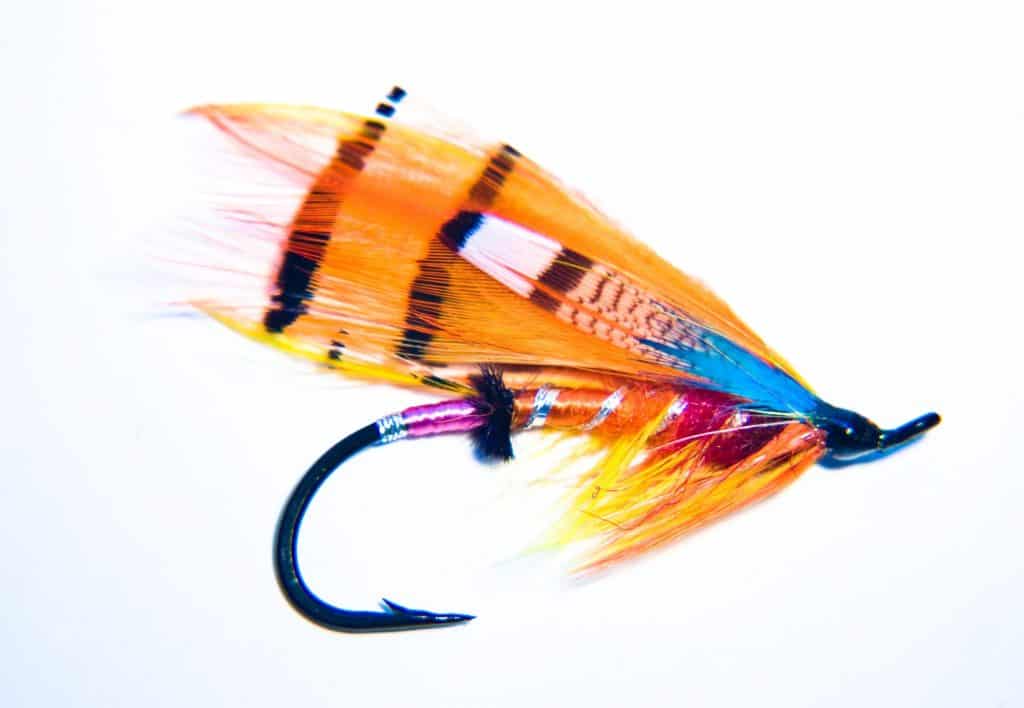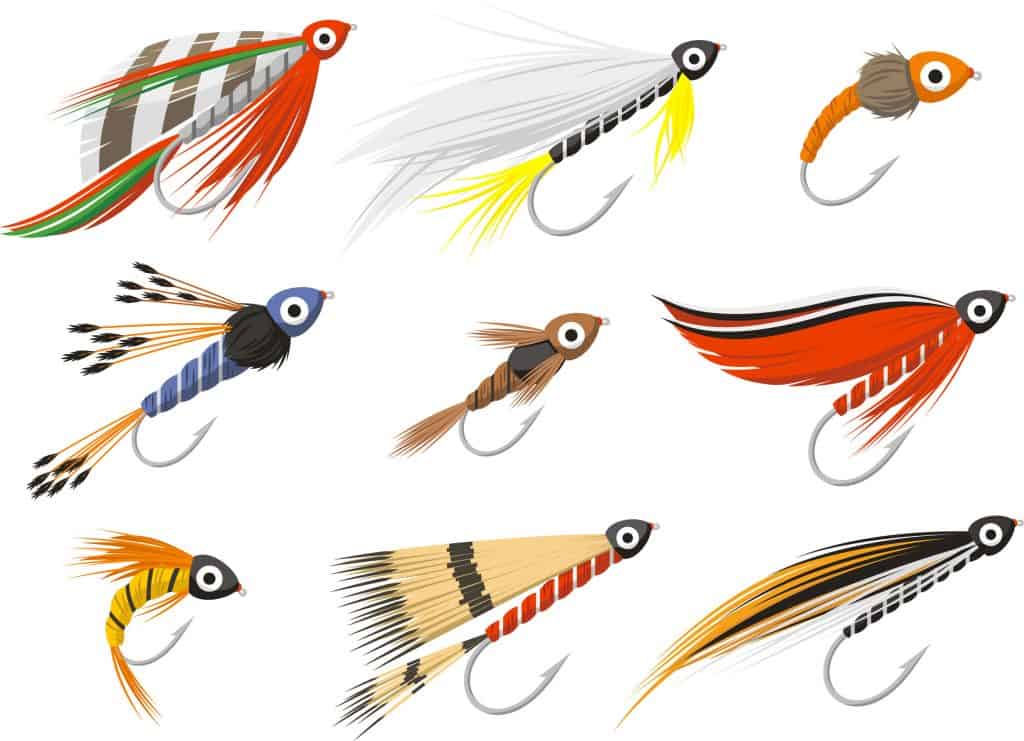
As a college student and avid fly fisher, buying fishing flies is starting to take a toll on my bank account. It got me wondering: how much fishing flies cost?
How much do fishing flies cost? Typically a fishing fly will cost anywhere from $2-$3, depending on where the fly was made, what it is made out of, and where it was distributed from. Once you have some experience with fishing flies, you can even make them yourself as a cost-effective option.
As I got to thinking about how much flies cost, I started to wonder if maybe making my own flies would be worth it. After all, I would just have to buy a few materials and put the work in.
Price Differences in Fishing Flies
Just like anything that you purchase, whether it be groceries or fishing materials, the price of flies can differ dramatically. If I were to go into a fishing tackle and bait shop right now, I could probably sort everything into three groups.
I would sort them into the cheap stuff. These are the flies that were probably made either in China or were somehow made illegally. When you find these, chances are they are under $1. While these flies make work temporarily, they really aren’t any good
The next group I would sort would be the average price range. These are probably anywhere above the $1 mark all the way to below the $5 mark. Typically, these flies are coming from somewhere that makes pretty good flies. These companies might make them more in bulk, but at least you can leave knowing that your fly will probably last a while.
The last group I would sort them into would be the specialty flies. or as my bank account likes to call it, oh no. These can range all the way from $5 to $15 each.
These are going to have more flashy material that will attract fish and be able to graze through the water probably a little bit better. These are really nice flies, but definitely more of a luxury than a necessity.
Now you can compare these prices to that of the prices to make your own fly. To make your own fly there are a lot of materials you will need to purchase before anything else. These materials will include a vise, specialty scissors, bobbin,
All of these materials will add up to almost $115 and that doesn’t even include the fact that you’ll need to purchase the actual fly materials such as hooks, tail, body, and hackle.
The prices of the fly material will likely come out to $20 depending on how flashy you make it. By the end, you have spent almost $150. That is why I said at the beginning that unless you are someone who sells their flies, chances are you will not want to start making your own flies.
Why Tie Flies
There is a lot of artistic value that can go into tying flies. A few benefits of tying flies may include that you have your own artistic outlet or just an outlet in general where you can let all the stress of your day melt away.
Others tie flies just to save money. This one is a little tricky because, as seen above, if you break down the cost of tying a fly it doesn’t actually save you money. On the contrary, it actually costs you over $100 more. However, if you can find a really good deal or buy your material to make flies in bulk, this could even out a bit.
Another way to potentially save money when tying flies is to sell your flies. You do have to be pretty good at making flies in order to be able to sell them. However, if you have a small shop nearby, chances are you could make a deal with them where they would sell your flies and you’d make an even bigger profit doing something that takes your stress away.
When you buy flies from the store, you are only going to be allowed to purchase what the store has to offer. If you want to change the color of the feathers or something really simple like that, chances are, you’ll end up having to go to a custom fly shop.
This obviously is going to cost you even more money than if you would have just made your own fly in the first place.
How to Make a Fly?

A few years back, fly fishing became a big deal. Everyone wanted to try it.
There are many materials involved in making a fly. These materials include a vise, two pairs of scissors, a dubbing needle, a bobbin, hackle pliers, fly tying cement, fly tying wax, and assorted feathers, furs, and hooks.
The vise’s use is just to clamp the hook down on the table so that you can make the fly around it. As you can imagine, this is an extremely important part. If you didn’t have the vise, imagine how difficult making a fly would be. You would end up with several battle wounds you wouldn’t want to tell your friends about.
The scissors are pretty self-explanatory. You will need two pairs. They are different sizes and have different purposes. You need these scissors to be great quality steel. For the first pair of scissors make sure it is extremely small and for the other it’ll just be a normal pair of adult scissors.
The dubbing needle is more of an accuracy type tool. It will fix most of your unwanted mistakes allowing for you to get cement out of the eye of your hook or even just moving a feather or two.
I recommend using a bobbin as a beginner just because it’ll make holding down the silk a lot easier.
Hackel pliers are not mandatory but they are definitely a blessing to have. Hackle pliers are used to twist the feathers around the hook.
Fly-tying cement can be found in small jars, and you won’t need to use a whole lot of it. It is used to hold the materials of the fly together, like keeping the feather on the hook.
Unless your silk is pre-waxed, you will need to purchase fly tying wax. This will add strength to the fly and also help with adhesion where the cement could not.
When you purchase your furs and feathers go ahead and have fun. This is the object used to attract fish so the more flashy the better. One thing to keep in mind is that there are a lot of poachers out there trying to sell the fur of endangered species.
There are substitutes out there if you are dying to have that look. Just be careful to keep the environment around you safe.
When you are starting to make your own flies, you are going to want to find a pattern that is easy for you to follow.
You may come across a pattern that calls for polar bear fur. This is either a really old pattern or this pattern belongs to someone who is ok with poaching. Obviously, you should only follow patterns that you have the materials and skills to make.
Related Questions
What is the point of fly fishing? Fly fishing is a way of fishing where fishermen will use what is called a fly to catch a fish’s attention. This is done but letting the fly bounce off the water just like what a real fly would do.
What flies should I use for trout? One of the most recommended flies for catching trout is called the San Juan Worm. This is a great choice of bait for the species of trout.
Is there a difference between wet and dry fly fishing? Wet flies are a type of fly that sink a little bit in the water and the fish see it thinking it’s a dead fly. Dry flies are supposed to resemble live flies and instead of actually going into the water, they bounce on top of the water.
